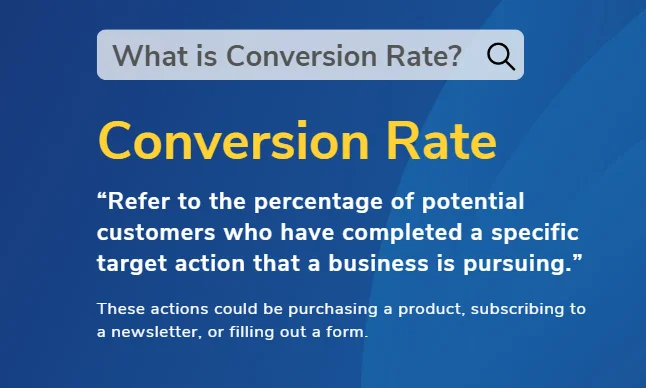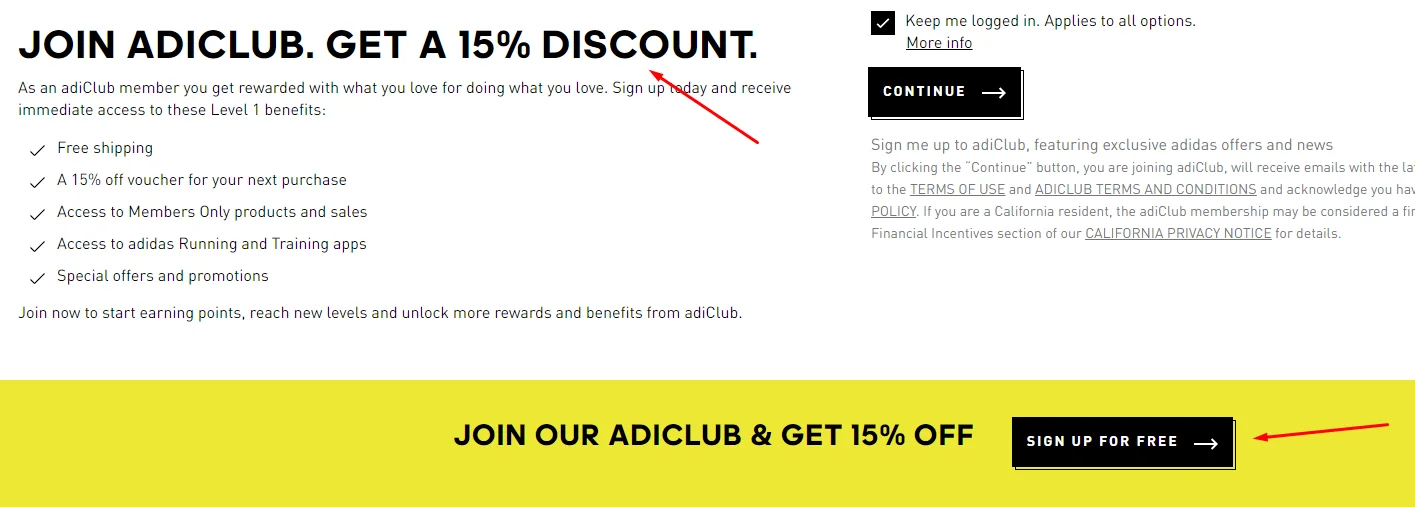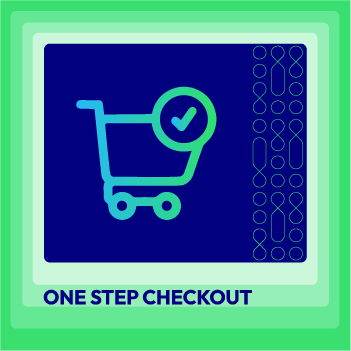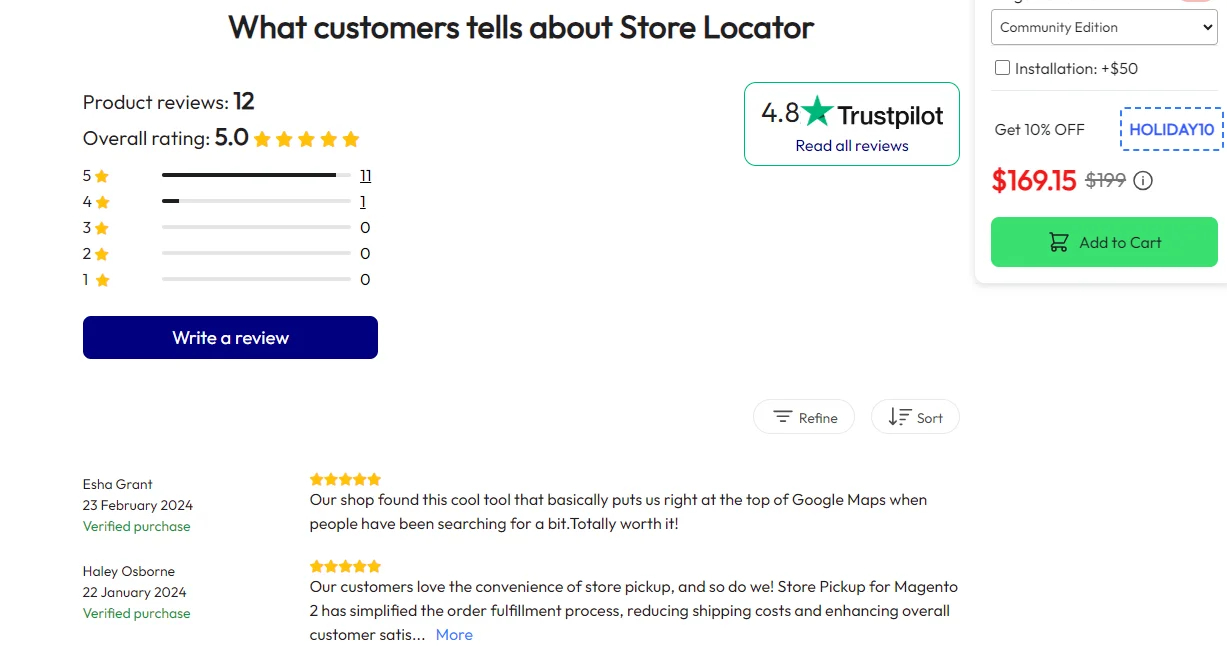What is the Conversion Rate? Definition, Calculate, & Examples

In the 21st century, with the rise of online shopping, store owners must focus on how to attract attention to their products and brands. A vital indicator of a website’s effectiveness and its potential for generating sales is its conversion rate. In this article, we will delve into what conversion rates are and show you how to measure and improve them quickly and effectively.
What are Conversion Rates & Factors Affecting Them?
Conversion rate refers to the rate of potential customers who have completed a specific target action that a business is pursuing, often used to measure the performance of a marketing campaign. These actions could be purchasing a product or service, subscribing to a newsletter, reacting to a post, or filling out a form.

For example, the conversion rate of a website is the percentage of users who have actually performed specific actions, such as clicking on navigation buttons, clicking on product links, leaving information, registering for advice, and placing orders... compared to the total number of visitors. Similarly, the conversion rate on Facebook, TikTok, or Instagram also measures the performance of marketing campaigns on these platforms. This term is used to measure the number of users interacting with content such as likes, shares, clicks on links, document downloads,…
Conversion rates in marketing can be influenced by a variety of factors, including:
- Content and Call to Action: The quality and persuasiveness of the content, as well as the clarity and strength of the call to action.
- User Experience: The overall customer experience, including website design, navigation, and loading speed.
- Business-Customer Interaction: The quality and effectiveness of interactions between the business and its customers, such as customer service and support.
- Credibility and Trust: The level of trust that customers have in the business is influenced by factors like brand reputation, reviews, and security.
- Timing and Frequency of Exposure: When and how often customers are exposed to marketing messages.
- Checkout Process: The ease and efficiency of the checkout process.
The Importance of Conversion Rate
Tracking conversion rates helps you measure how well your web pages and apps are performing. By knowing what percentage of users complete the important actions for your business, you can evaluate how successful your site or app is and identify where improvements are needed.
Boosting your conversion rate means you can generate more sales from the same amount of traffic. For instance, if you spend $1,000 a month on advertising to bring 500 visitors to your site, doubling your conversion rate means you get twice the return on your ad spend.
This lets you either cut back on your advertising budget while keeping the same results or use the extra revenue to fund new advertising initiatives.
How to Calculate the Conversion Rate
To calculate customer conversion rates, you can use the following formula:
Conversion Rate (%) = (Number of Conversions / Total Number of Contacts or Interactions) x 100%.
In this formula:
- “Number of Conversions” is the number of target actions that customers have taken (sign-ups, purchases, downloads, form fills, phone consultations, etc.).
- “Total Number of Contacts or Interactions” is the total number of interactions between the business and customers in marketing campaigns.
For example, your website has 5000 visits in 1 month. Of those, 400 people made a purchase.
Therefore, the conversion rate is 400/5000 = 8%.
How to Optimize the Conversion Rate in Marketing
To optimize customer conversion rates in marketing, businesses can refer to and apply some of the following suggestions:
1. Create Engaging and Valuable Content

Customers will only engage with content that they find appealing or valuable. Therefore, businesses should optimize their content before posting to ensure it delivers the best performance.
Before you begin creating content, you can research to understand your customers’ needs and desires. Use market research tools or customer surveys to gather this information. Additionally, ensure that the content is relevant to your target audience and is presented in a clear and accessible way so that your target customers can easily understand it.
The application of Artificial Intelligence (AI) in content optimization is becoming an undeniable trend. Not only does it save time and effort, but it also offers a relatively high level of creativity. Two of the most popular AI tools to help you quickly generate engaging content ideas are Gemini and ChatGPT.
2. Create Effective CTAs
A CTA (Call to Action) serves as the bridge between a business and its customers. Knowing how to place and design an effective CTA can drive customer action. An effective CTA should include the following elements:
- Prominent Placement: Position the CTA where users can easily see it. Use eye-catching colors to make the CTA stand out from other content.
- Concise and Clear: The CTA should be brief and easy to understand. It should clearly communicate the action the business wants the customer to take, such as “Sign Up” or “Buy Now.”
- Action Guidance: The CTA should guide customers on the specific action they should take. Additionally, it should create a sense of urgency and persuasion to encourage customers to act quickly.
Here is an example of an attractive CTA created by Adidas:

3. Simplify the Purchase Process
When optimizing conversion rates in marketing, it is crucial to focus on the purchasing and payment process. This is where customers decide whether to complete a transaction. It is important to streamline this process to create a smooth experience for them.
To simplify the purchasing process, consider the following approaches:
- Reduce Unnecessary Steps: Eliminate non-essential steps in the purchasing process. This includes minimizing the number of times customers need to enter information and perform actions.
- Offer Multiple Payment Methods: Allow customers to choose from many payment methods, including cash, bank transfer, credit cards, or digital wallets.
- Provide Online Support: Ensure customers can easily and quickly contact the business if they encounter difficulties during the purchase process.
If you’re a Magento 2 store owner, we highly recommend trying the One Step Checkout extension. This useful tool simplifies the customer shopping experience by consolidating all payment steps into a single page. As a result, your store will see a decrease in cart abandonment rates, leading to significant increases in conversion rates and sales.

One Step Checkout for Magento 2
Cut down 80% of checkout time & increase 30% of conversion rates (Hyva ready)
Check it out!4. Create a Sense of “Fear Of Missing Out” (FOMO)
Businesses can trigger customer emotions to increase conversion rates by creating a sense of urgency. There are two types of urgency that businesses can use to boost conversion rates:
- Scarcity of Quantity: Customers often feel pressured to buy immediately before items are gone. For example, “only 5 products left” or “first 10 buyers get 30% off.”
- Scarcity of Time: Customers feel the need to purchase or use a service within a limited time to avoid missing out. For example, “promotion available for just one day.”

5. Build a Trustworthy Website
Building a trustworthy website and providing comprehensive information about products is another way to increase conversion rates. A website not only serves as a place for potential customers to have a better understanding of products or services but also as a foundation for building their trust. However, a professional website relies not only on design but also on other factors. Therefore, businesses should also include contact information, ensure high-quality content and design, and add customer reviews and feedback to enhance the brand’s credibility.

6. Focus on Customer Service
Customer service is an important aspect of business, encompassing all activities aimed at meeting customer needs and resolving their issues. A Zendesk survey reveals that 70% of customers are more likely to make a purchase from a company that addresses their problems quickly and effectively. In addition to increasing conversion rates, excellent customer service helps businesses retain existing customers and build loyalty.
A superior customer service experience is characterized by:
Prompt and professional responses: Customers expect their inquiries to be answered quickly, especially through online chat or email.
Clear return and warranty policies: Return and warranty requests should be handled promptly, and the return and warranty procedures should be as simple as possible.
Personalized customer experience: Track customer purchase history to provide relevant product recommendations. Additionally, create exclusive promotions and offers for loyal customers.
Listen, evaluate, and improve: Regularly collect customer feedback to assess service quality. If the store is at fault, take appropriate steps to compensate customers and regain their trust.
7. Implement A/B Testing
A/B testing is a key technique for optimizing customer conversion rates. According to a Zipdo survey, companies that use A/B testing to optimize their websites and marketing campaigns see an average increase in conversion rates of 49%.
In an A/B test, two or more variants are randomly shown to users. After a testing period, statistical analysis reveals which variant has a positive impact on user behavior.
To help you run A/B tests effectively and address your specific needs, we’ve selected two of the top A/B testing tools:
- Optimizely: Used by 24 Fortune 100 companies, Optimizely is a major player in digital experimentation, catering specifically to enterprise-level customers.
- VWO (Visual Website Optimizer): VWO is widely popular in the marketing field. It’s a great option for companies with smaller budgets and is often used alongside Optimizely by businesses that conduct complex testing campaigns.
Conclusion
In summary, optimizing conversion rates is essential for effective marketing. By analyzing metrics, making targeted improvements, and continually refining strategies, businesses can boost customer engagement, sales, and ROI, leading to sustained growth and stronger audience connections.





![Top 20+ Must-have Shopify Apps for 2025 [Free & Paid] - Mageplaza](https://cdn2.mageplaza.com/media/blog/must-have-shopify-apps/top-must-have-shopify-apps.png)
![[2025 Updates] Top 10+ Upsell Apps for Shopify - Mageplaza](https://cdn2.mageplaza.com/media/blog/best-upsell-shopify-app/cover.png)